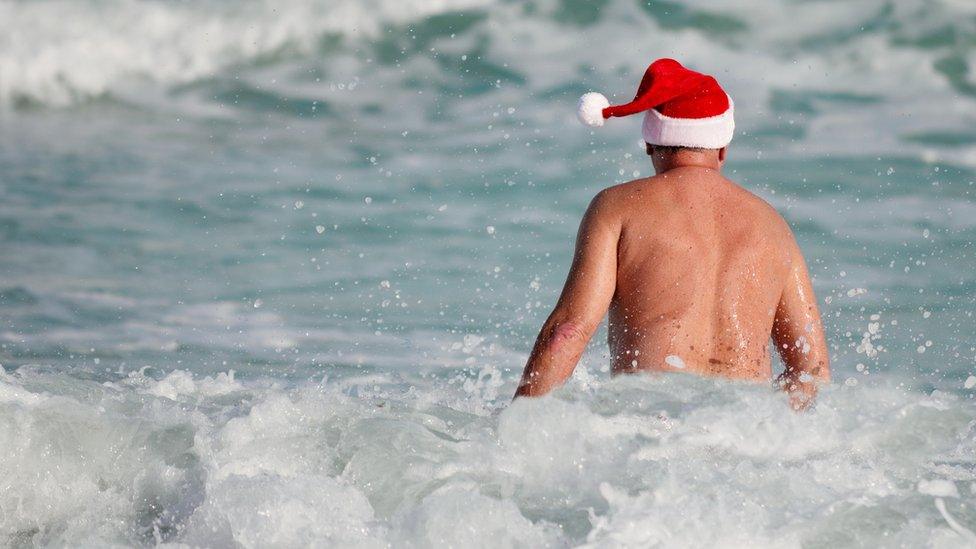Sea swimming: Nearly all NI bathing sites meet water standards
- Published
- comments
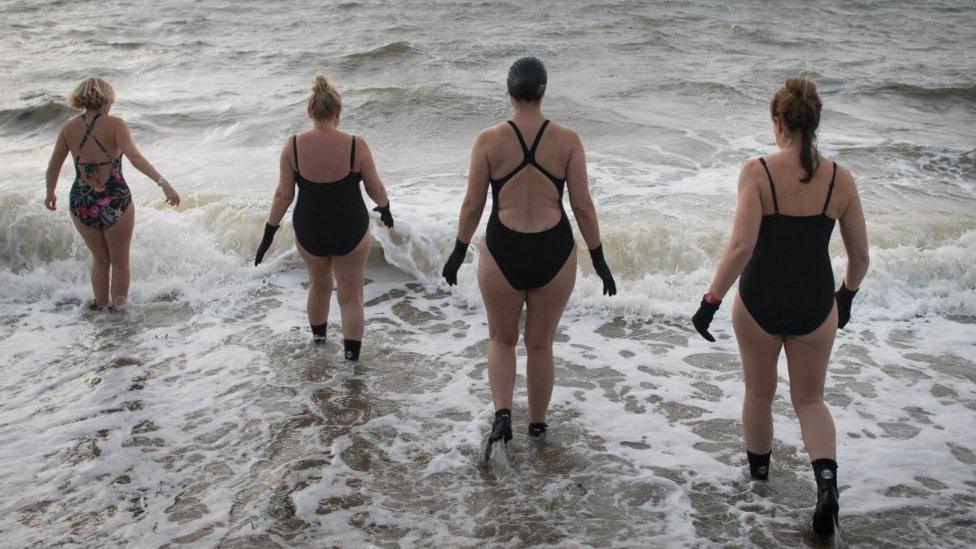
All but one of Northern Ireland's designated bathing sites met minimum water quality standards
Nearly all of Northern Ireland's 26 bathing areas met water quality standards for swimming in 2023.
New figures show 18 beaches classified as excellent, with another six found to be good and one sufficient.
But Ballyholme in Bangor, County Down, failed to meet the minimum standards for the second year in a row.
The mostly positive news comes despite a series of issues with Northern Ireland's bathing water in recent times.
The summer was dominated by blue-green algal blooms that caused bathing bans, while the annual report from campaign group Surfers Against Sewage said there was a severe lack of water monitoring which meant "vital information" was unavailable.
The water quality standards are compiled by the Department for Agriculture, Environment and Rural Affairs, external (Daera).
The department said this year was the first time algal blooms had affected the quality of some bathing waters, which it described as "a huge asset".
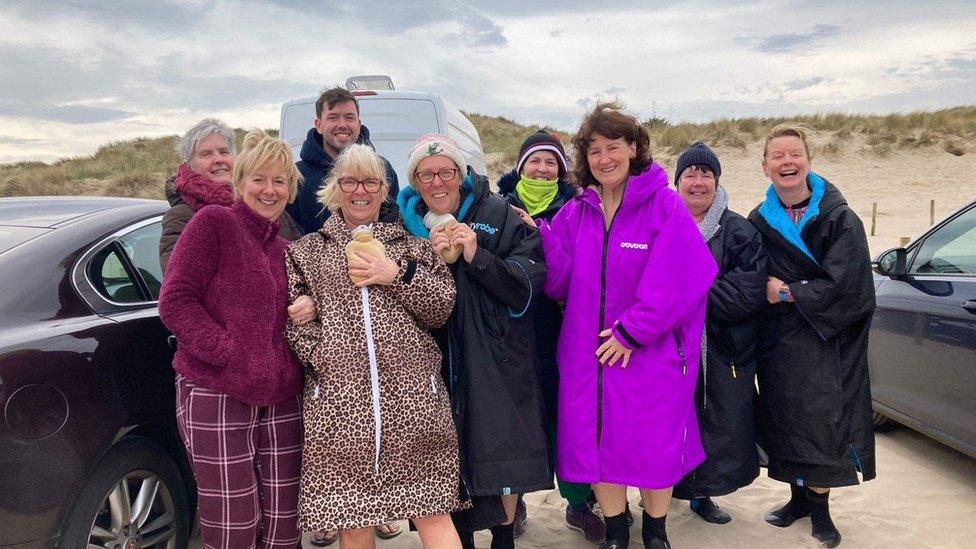
The Menopausal Mermaids, who take to the water at Portstewart Strand, are one of Northern Ireland's many sea swimming groups
To determine water quality, 20 samples were collected from each site to check for faecal indicator organisms - that is used to assess how much the water has been contaminated by sewage.
Visual assessments were also carried out during each sampling visit to assess for pollution, including waste, proliferation of seaweed, or algal scums and blooms.
As well as the 26 identified bathing sites, another seven waters were sampled with results described as disappointing and "showing the vulnerability of all our waters to pollution during heavy rainfall events".
'Accurate real-time information'
Those waters included Northern Ireland's first designated inland bathing water at Rea's Wood, Lough Neagh in County Antrim, which was also affected by blue-green algae.
The figures come as Surfers Against Sewage published its annual water quality report, external.
It called for "accurate and accessible real-time water quality information" to be available all year and for "transparency across the sewage system".
This year a pilot scheme allowed swimmers, for the first time, to use an app to get daily forecasts of water quality at six beaches.
While it worked well for four beaches, the department said the modelling supporting the forecasts needed further development for the remaining two and would be refined for next year.
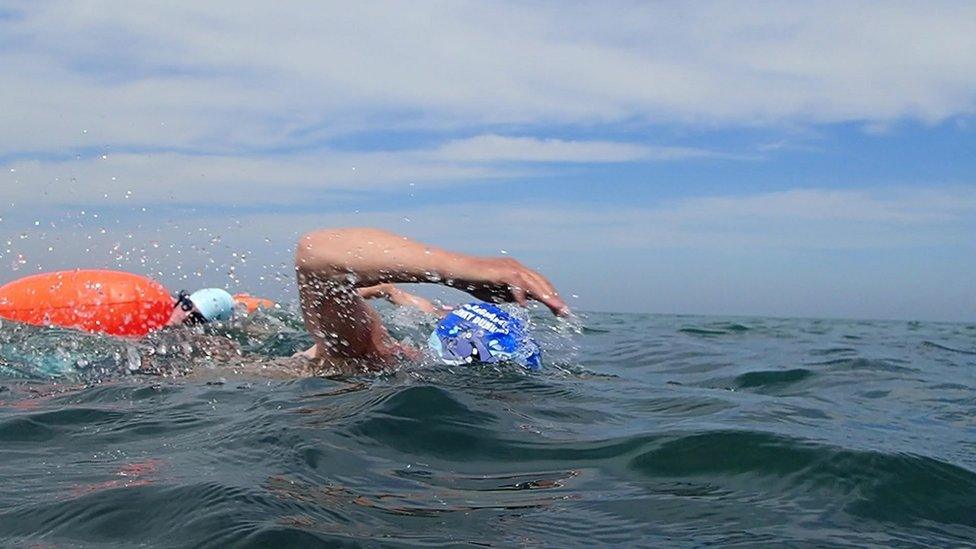
Swimmers can now use an app to get daily forecasts of water quality at some beaches
The Rivers Trust's all-Ireland director Mark Horton said management of sewage in Northern Ireland was in "critical need for investment and modernisation".
He also warned that the absence of a functioning power-sharing government in Northern Ireland and the lack of an independent environment agency meant "decisive actions" to protect and restore water quality were "practically impossible".
In November 2023, Northern Ireland Water published a map of storm overflows, external that are designed to discharge sewage during exceptionally heavy rainfall.
Those overflows can potentially lead to bathing areas becoming contaminated.
Related topics
- Published7 August 2023

- Published4 October 2023
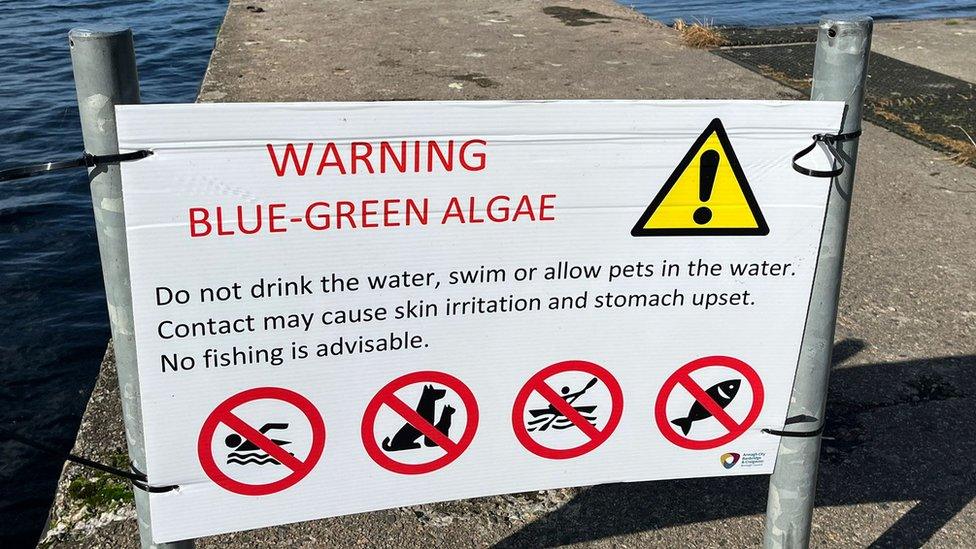
- Published26 December 2021
